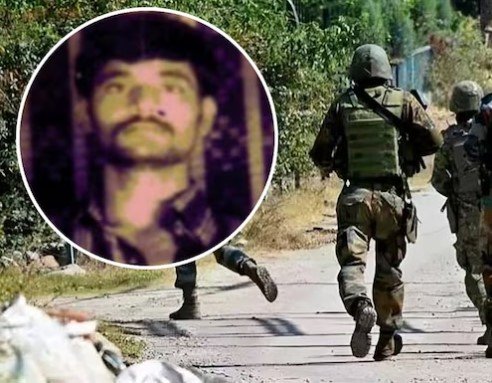Hyderabad : In a significant breakthrough in the fight against Left Wing Extremism (LWE), Odisha Police, in a joint operation with the District Voluntary Force (DVF), arrested hardcore Maoist leader Kunjam Hidma, alias Mohan, in Koraput district on May 29, 2025. The operation took place in the dense Petaguda forest under the Baipariguda police station limits, marking a major success for security forces. Hidma, a most-wanted figure on the Maoist list, was apprehended with a cache of weapons, including an AK-47 rifle and ammunition, seized during the operation.
Hailing from Puvvarti village in Chhattisgarh’s Sukma district, Hidma, an Adivasi with only a fifth-grade education, joined the Maoist movement at the age of 25. Now 44, he rose through the ranks to become the commander of the People’s Liberation Guerrilla Army (PLGA) Battalion No. 1 and a member of the Dandakaranya Special Zonal Committee. Known for his expertise in guerrilla warfare and military strategy, Hidma has been a key figure in orchestrating deadly attacks, including the infamous 2011 Chintalnar attack in Sukma, where 75 CRPF jawans lost their lives, and the 2017 Burkapal attack. His leadership in the Maoists’ Tactical Counter Offensive Campaign has made him a feared figure, with his battalion notorious for its ruthlessness and precision.
Hidma’s arrest comes amidst earlier unconfirmed reports of his death. In February 2025, news surfaced claiming that Hidma Madvi, another prominent Maoist with a Rs 1 crore bounty, was killed in a Chhattisgarh-Odisha border operation. However, those reports were later clarified, and it was confirmed that the Kunjam Hidma arrested in Koraput is a distinct individual, a senior Maoist leader from Chhattisgarh’s Bijepur area. His ability to evade capture for years, often without even a photograph in police records, underscores his elusive nature. The operation in Koraput was launched based on intelligence inputs about Maoist movements in the Petaguda forest.
When the DVF team surrounded the Maoist camp, the insurgents opened fire and fled, but Hidma was apprehended while hiding in nearby bushes. His arrest is seen as a significant blow to the Maoist network, particularly in the Odisha-Chhattisgarh border region, where he played a pivotal role in coordinating violent activities. Hidma’s influence within the CPI (Maoist) extended beyond combat. Despite limited ideological training, his reputation grew through his mastery of guerrilla tactics and his command over the formidable Battalion No. 1, known as the “Sukma Team” for its devastating attacks. Police sources indicate that Hidma was linked to seven major violent incidents in the region, cementing his status as a top target for security forces.
This arrest aligns with the Indian government’s intensified efforts to dismantle Maoist networks, with Union Home Minister Amit Shah recently emphasizing the goal of eradicating Naxalism by March 2026. The operation in Koraput follows other recent successes, including the neutralization of 27 Maoists, including top leader Nambala Keshav Rao, in Chhattisgarh earlier this month. Odisha Police and security agencies are continuing their combing operations in the region to track down other Maoist cadres who escaped during the encounter. Hidma’s arrest is expected to yield critical intelligence about the Maoist network’s operations, further weakening their stronghold in the Dandakaranya region.


